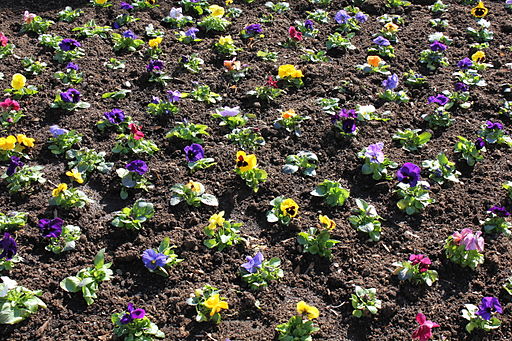Fall Garden Tips
September brings many changes to
the garden, reminding us that summer is indeed ending. Shorter days encourage some plants to begin
their bloom cycle and others to end it. Relief from extreme heat and the
improving chance of rain makes fall an ideal time to plant both hardy plants
like perennials, tree and shrubs, and seasonal color like pansies and mums.
It’s also a great time to get into the garden for a fall cleanup.
Some annuals like verbena and petunias may rebound after summer heat ends and with a little grooming or cutting back can look good until the first few frosts. You can give them a little extra fertilizer to perk them up and encourage some more flowers. Any annuals that look terrible from the effects of summer can be removed and replaced with fall planting of pansies, mums and other fall flowers.
Some flowering perennials like black-eyed Susan or purple coneflower have seed heads that provide food for birds If you like the way they look in your garden, feel free to leave them. Other perennials can add visual interest to the winter garden, like ornamental grasses or flowering sedums. If they serve no purpose as bird food or winter interest, perennials that bloomed earlier in the season should have old flowering stems removed, leaving just the leaves that emerge from the crown. Dead and diseased leaves should also be removed from any plant to reduce the spread of disease. Don’t remove relatively healthy leaves yet-plants use their leaves in late summer and early fall to produce food that will be stored for winter survival. Wait until leaves begin to die to remove them.
Except for thinning or removing dead or diseased branches areas, little pruning should be performed on shrubs and trees in fall. Any new growth encouraged by pruning will not have time to harden before winter, potentially causing more dieback of tender new leaves and twigs.
If possible, wait until soil temperatures cool before mulching. Mulch applied early can keep the ground warm, delaying full dormancy of hardy plants. A sudden, early blast of cold can cause more damage if plants are not in a dormant stage. For similar reasons, avoid planting spring blooming bulbs like tulips & daffodils until soil temperatures drop to around 60F. October generally brings soil temperatures to the desired range in the Triad.
If you have a low soil pH, which a lot of clay soils naturally do, you can put out pelletized lime at this time to help raise it. Liming can be done at the same time as reseeding. New Garden has test kits that can be sent to the state for analysis to determine your soil pH, and instant read pH meters and do-it-yourself test kits. Read the instructions closely on the bag and follow the instructions as to how much to apply for your soil’s pH.
Keep your birdfeeders filled in fall to help non-migrating birds fatten up for winter and to supply valuable food to migrating birds. Seeds with high oil content like black oil sunflower seed supply lots of energy, as does suet or nuts. Attracting birds to hang out in your yard helps with insect control in the garden.
Pull out any dying plants in your vegetable garden. Leave tomatoes if they are still setting fruit-any green ones can be pulled right before the first frost to ripen on your windowsill. Plant lettuce & other salad greens, cole crops (cabbage, kale, Brussels sprouts, collards etc.), radishes & spinach for a fall harvest of fresh vegetables.




